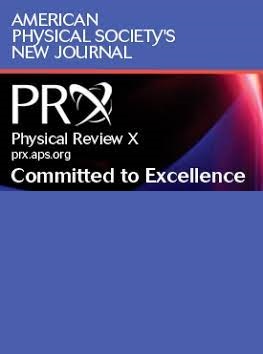极低能量氘核-氘核反应新通道的实验特征
IF 15.7
1区 物理与天体物理
Q1 PHYSICS, MULTIDISCIPLINARY
引用次数: 0
摘要
在极低能量的氘核-氘核(DD)聚变中发现了一个新的e+e−反应通道,这可能对理解原始和恒星核合成具有重大意义,在这些地方通常不考虑电子-正电子反应通道。它还可以促进金属氢化物聚变的研究,为下一代聚变能源的设计和建造铺平道路。继电子发射的第一个实验指示之后,我们在这里提出了一个广泛的实验研究,证实了DD反应在非常低的能量下发射高能电子。同时使用不同厚度的Si带电粒子探测器和大体积的NaI(Tl)和HPGe探测器,可以确定氘核能量低至5 keV时发射的质子、中子和e+e -对之间的分支比。高能正电子可以通过它们的轫致辐射光谱和湮灭辐射明确地探测到,并得到了eant4蒙特卡罗模拟的支持。理论计算基于He4中阈值共振和已知宽共振之间的破坏性干涉,与实验观察到的分支比的增加对降低弹射能量的影响非常吻合。内部e+e−对产生的阈值共振的部分宽度应至少大于质子通道的10倍。本文章由计算机程序翻译,如有差异,请以英文原文为准。
Experimental Signatures of a New Channel of the Deuteron-Deuteron Reaction at Very Low Energy
The discovery of a new, e+e− reaction channel in deuteron-deuteron (DD) fusion at very low energies might have major implications for understanding primordial and stellar nucleosynthesis, where electron-positron reaction channels are typically not considered. It could also enable research on metal hydride fusion, potentially paving the way for the design and construction of next-generation fusion energy sources. Following the first experimental indications of electron emission, we present here an extensive experimental study confirming emission of high-energy electrons from DD reaction at very low energy. A simultaneous use of Si charged particle detectors of different thicknesses and large-volume NaI(Tl) and HPGe detectors has allowed the determination of the branching ratios between emitted protons, neutrons, and e + e − He 4 e + e −
求助全文
通过发布文献求助,成功后即可免费获取论文全文。
去求助
来源期刊

Physical Review X
PHYSICS, MULTIDISCIPLINARY-
CiteScore
24.60
自引率
1.60%
发文量
197
审稿时长
3 months
期刊介绍:
Physical Review X (PRX) stands as an exclusively online, fully open-access journal, emphasizing innovation, quality, and enduring impact in the scientific content it disseminates. Devoted to showcasing a curated selection of papers from pure, applied, and interdisciplinary physics, PRX aims to feature work with the potential to shape current and future research while leaving a lasting and profound impact in their respective fields. Encompassing the entire spectrum of physics subject areas, PRX places a special focus on groundbreaking interdisciplinary research with broad-reaching influence.
 求助内容:
求助内容: 应助结果提醒方式:
应助结果提醒方式:


